Module 07 - Creating Generative Art
Generative Art
The art world is currently reckoning with generative AI. While some individuals consider AI to replace human creators altogether, many others think of AI as an additional tool which aids in creation. There are many concerns about the training and/or input data used to power these models and whether creators’ consent is involved.
Table of Contents
- Generative Art
- Over 150 Generative Art Tools
- Potential Uses Cases in Science
- DALL-E vs. Adobe Firefly
- Don’t Expect Too Much
- AI Artists to Follow
- Discourse on AI-Generated Art
Over 150 Generative Art Tools
The OpenTools website has curated a list of over 150 generative art tools which are currently available. Each may have different pricing models or availability.
Potential Uses Cases in Science
- Personalized Lab Logos
- Graphical Abstracts for Research Papers
- Brainstorming Potential Journal Covers
- Conceptual Icons for Slideshows
- Badges for Github Repositories
- Stickers to Advertise Your Projects
- What are other ways generative art could benefit immunology research?
DALL-E vs. Adobe Firefly
Below are two generative art apps accessible via any internet browser. Here, we examine the differences when each software is given the same prompt to generate a logo for AI4Immuno:
Prompt Given

Alt Text: Image with light blue background with the following text printed, Cute cartoon logo with immune cells, bacteria, pathogens, and sparkles floating around a laptop showing the text: “AI 4 IMMUNO” (Source: AI4Immuno)
DALL-E via Bing Create
bing.com/images/create This option is currently free to use and appears to have a token limit, which “boosts” the speed of image generation for each query.
- Text-to-Image Interface
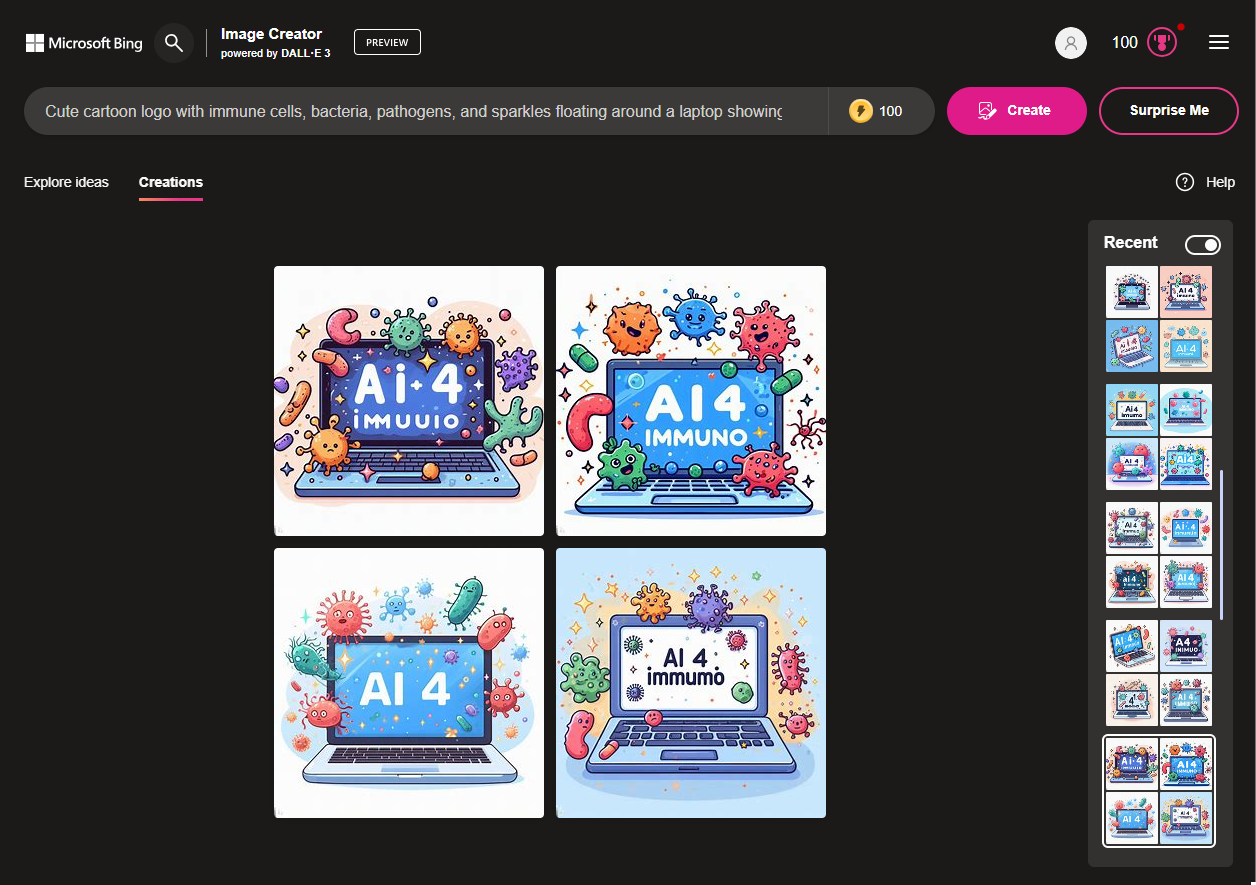
Alt Text: (Source: AI4Immuno)
- Output Examples
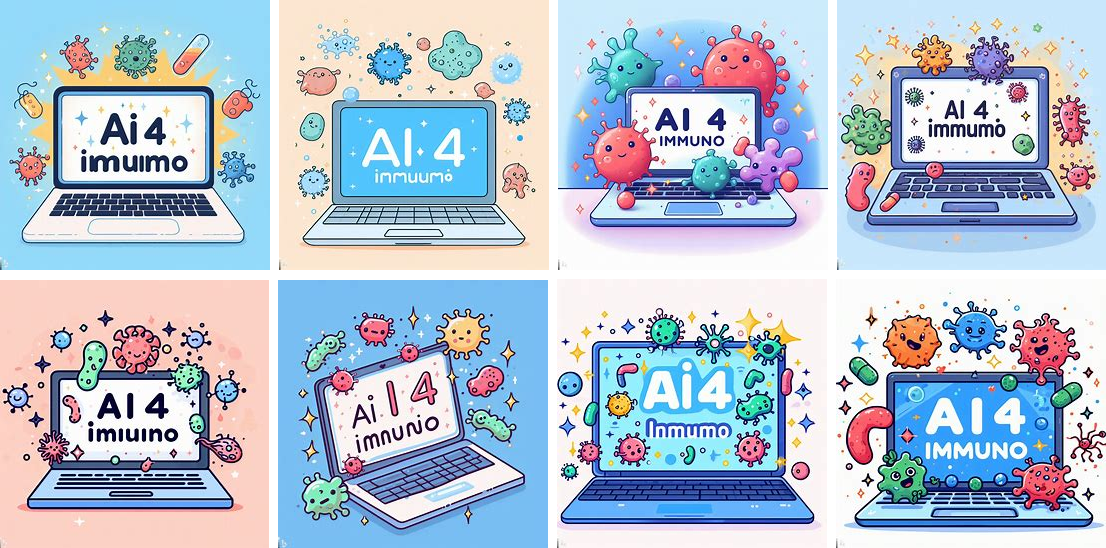
Alt Text: (Source: AI4Immuno)
Adobe Firefly
firefly.adobe.com/ This option requires having a subscription to Adobe Creative Cloud.
- Landing Page With Multiple Options
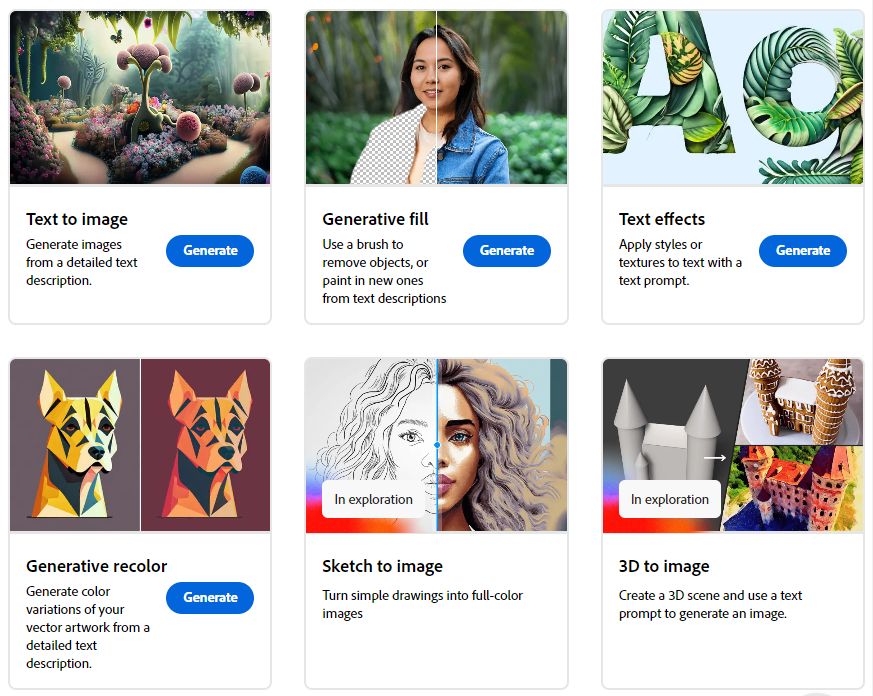
Alt Text: (Source: AI4Immuno)
- Text-to-Image Interface
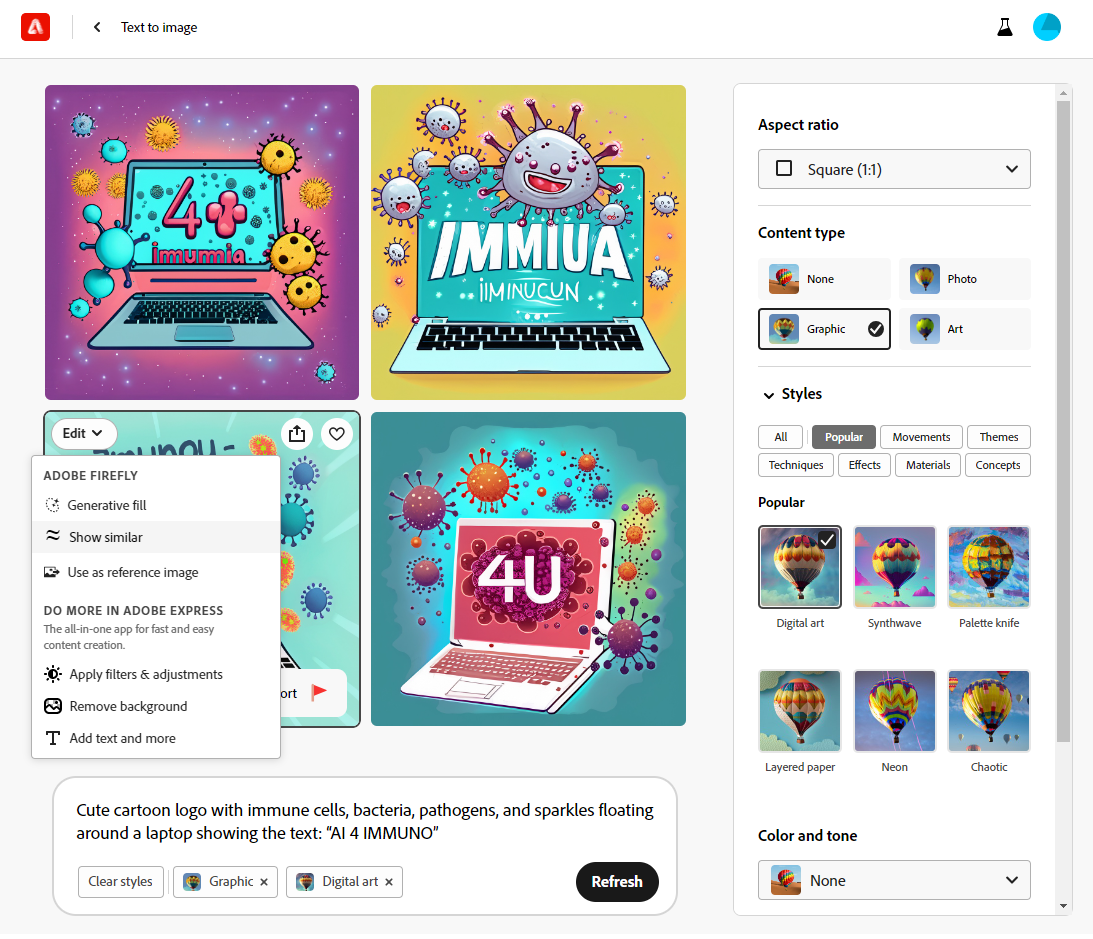
Alt Text: (Source: AI4Immuno)
- Output Examples
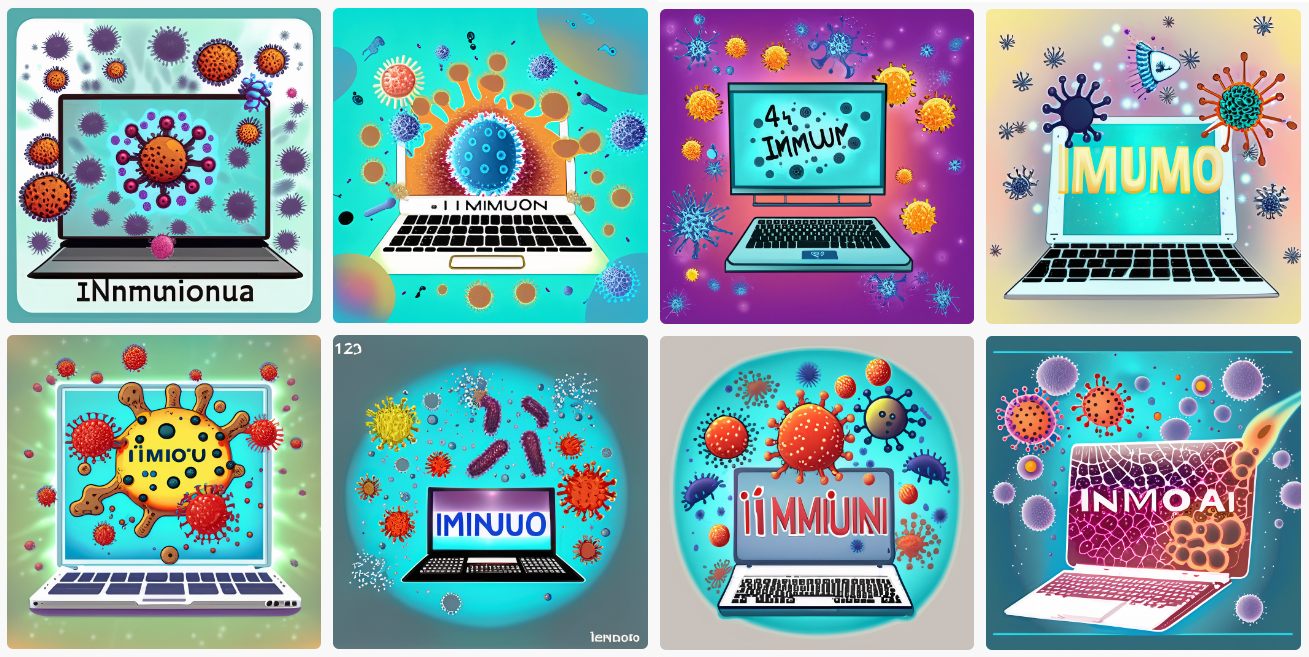
Alt Text: (Source: AI4Immuno)
Don’t Expect Too Much
As enticing as it may sound to generate dozens of “new” designs on the fly based on input text, there are considerable limitations of generative art tools. The end result is not always what a user has in mind and is typically difficult to customize. Each software has made its own stylistic assumptions which derive from the body of data available for training each model. Many AI art tools have trouble correctly spelling the exact input text or accurately depicting human hands. The current reality is that these tools cannot directly replace the talent and expertise of trained scientific and medical illustrators.
AI Artists to Follow
Countless artists have been creating generative AI art for years before the release of widely available software to the public. Artworks made with AI have reached one of the highest levels of exhibition in the art world, New York’s Museum of Modern Art.
- Marcus Volz, a mathematics researcher and artist
- Refik Adnadol
- Memo Akten
- Daniel Ambrosi
- Sougwen Chung
- Mario Klingemann
- Jake Elwes
- Linda Dounia
- Alexander Reben
- Stephanie Dinkins
- Jenna Sutela
- Anna Ridler
In addition to the renown artists listed above, AIArtists.org hosts the world’s largest community of artists exploring AI.
- 6 Artists Who Were Using Artificial Intelligence Before ChatGPT
- These Artists Are Using AI as a Creative Partner. See How!
Discourse on AI-Generated Art
- The Harvard Gazette: (Aug 2023)”If it wasn’t created by a human artist, is it still art?”
- The Chainsaw: (Nov 2022)”AI Art: Is it Really Art? We Asked Both Sides of the Story”
- Medium:
- (Apr 2023)”The Great Art Debate: Human Ingenuity vs. AI Assistance”
- (Mar 2023)”AI-Generated Art: The Ethical Implications and Debates” - Published in Becoming Human: Artificial Intelligence Magazine
- (Jan 2023)”The Great Generative AI Debate: To Use or Abuse?” - Published in Domestic Data Streamers Blog
- (Dec 2022)”The AI Art Debate: Excitement, Fear and Ethics” - Published in Towards Data Science Tech Blog